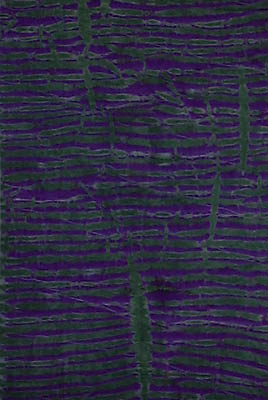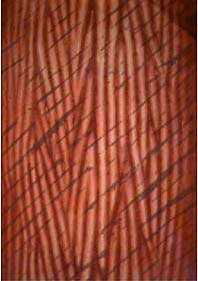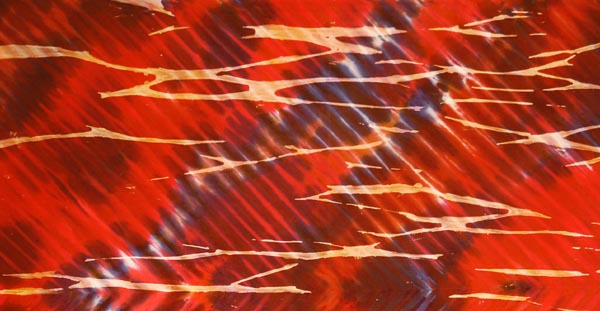![]()

The fabric on the right also involved discharging the dye, this time with bleach. After doing an arashi shibori in mostly reds and blues and washing the fabric, I put it back on a pole and wrapped it in an extremely casual manner. I then painted on bleach gel, producing the lighter sort-of horizontal lines.

First I dyed this fabric (a thick cotton sateen) bottle-green, and then wrapped it around a pole without tilting the fabric. I stripped off the color (also called "discharge") with something called Thiox (safer to use than bleach, and kinder on the fabric). After the green had disappeared on the parts of the fabric that were not being resisted by the pole-wrap, I soaked the fabric (still wrapped on its pole) in dark purple dye. A very dramatic technique, but one I haven't used too often; I usually just add color on top of the colors that are already there.

"fake" mokume shibori cloth
The cloth on the left had two separate dyeings. First I did a fairly straightforward arashi shibori pattern in a dark gray (these are the diagonal stripes), and then I did what I call "fake mokume"... Real mokume involves handstitching, and is too meticulous for my temperament. This mokume was done by laying my piece of cloth on a large PVC pipe, wrapping it with string, and then gathering the cloth underneath the string (but leaving the string spaced as before); this makes the cloth compress in such a way that the parts which resist will be somewhat irregular, making the wood- grain image ("mokume" means wood-grain).
home | store | studio & archives | gallery | fabrics | more information
|
|
© 2006 Colorquilts. All rights reserved.